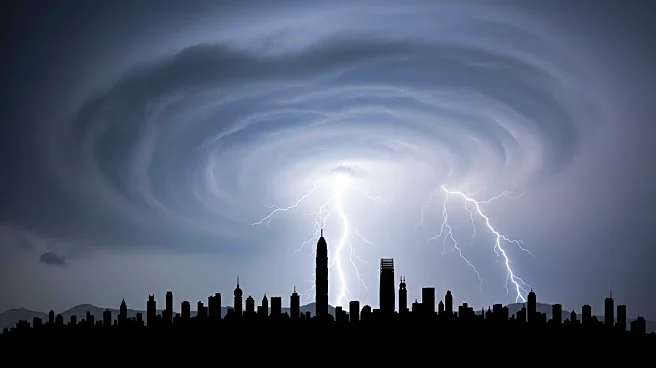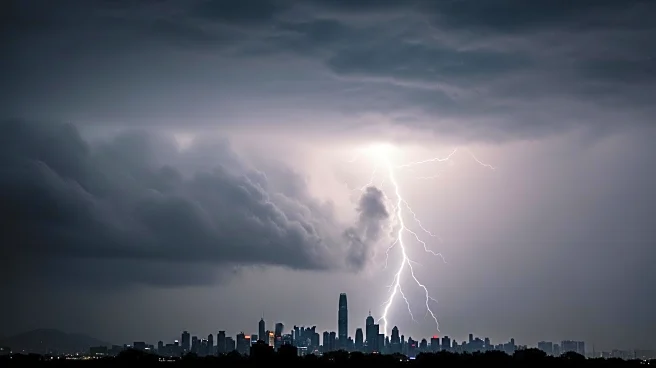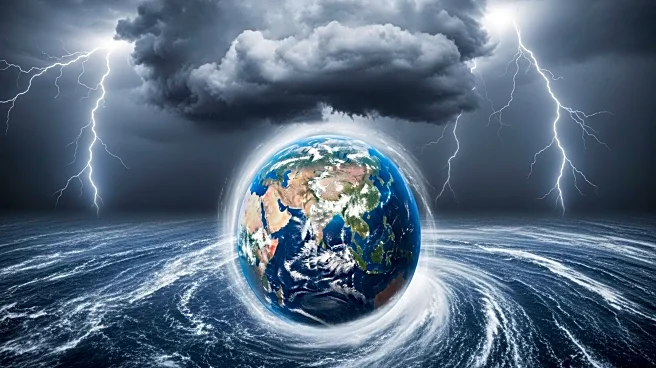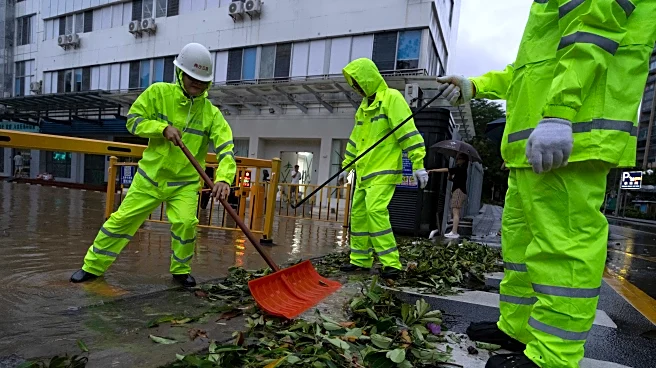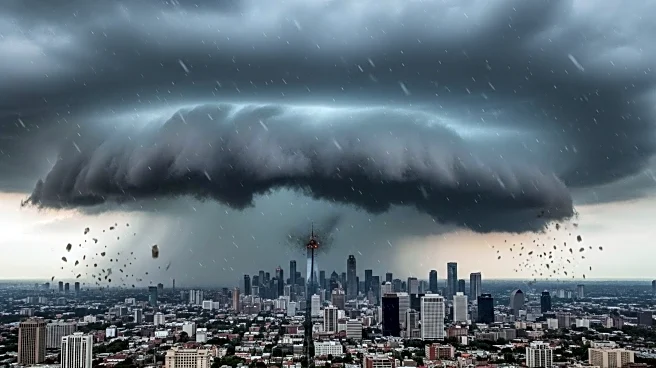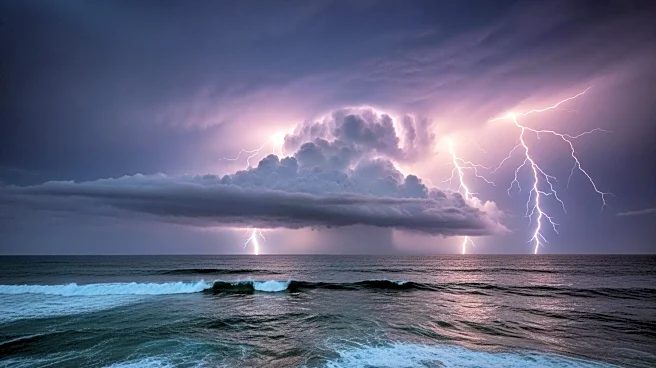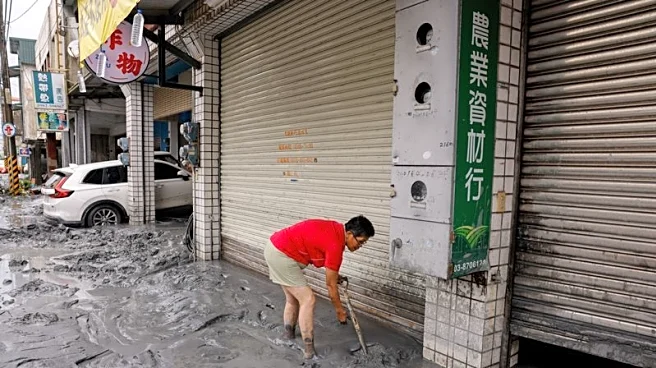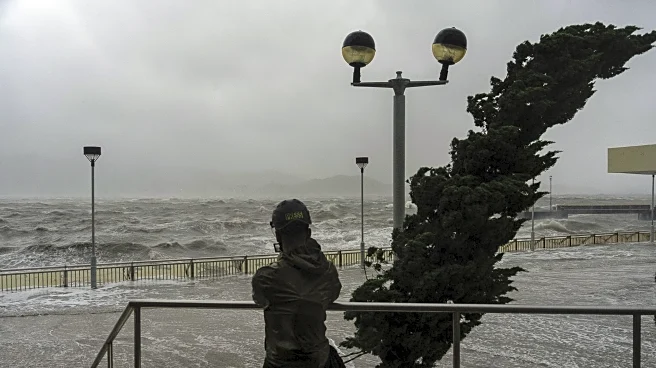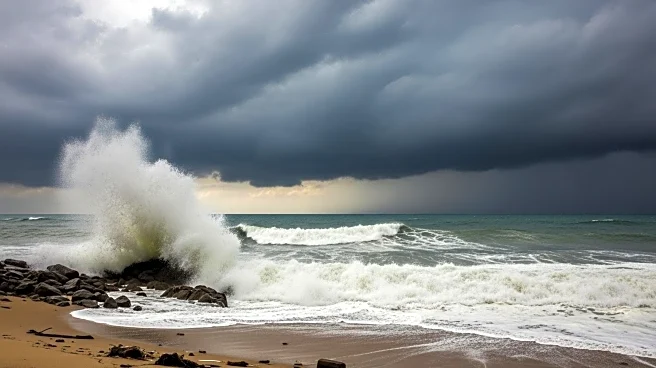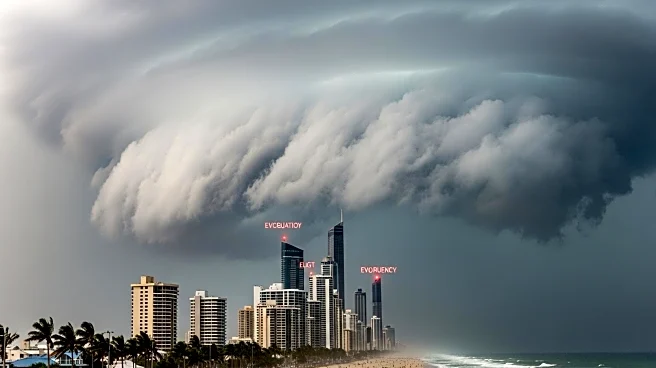What's Happening?
Typhoon Ragasa, the most powerful tropical cyclone of the year, has caused significant destruction in Taiwan, including the overflow of a barrier lake in Hualien county. The lake, formed by landslides from previous typhoons, released a wall of water into a town, resulting in fatalities and missing persons. The overflow destroyed infrastructure, including a major road bridge, and led to widespread flooding. Ragasa's impact extended to Hong Kong and southern China, where it caused injuries and economic disruptions. The typhoon's strong winds and heavy rainfall have highlighted the challenges of managing natural disasters in vulnerable regions.
Why It's Important?
The overflow of the barrier lake in Taiwan illustrates the complex interactions between natural disasters and geographical features. The destruction caused by Ragasa underscores the need for improved disaster preparedness and infrastructure resilience in regions prone to typhoons. The economic impact is significant, with damage to infrastructure and potential long-term effects on local economies. The event also raises questions about the predictability of such disasters and the effectiveness of current monitoring systems. As climate change influences weather patterns, the frequency and intensity of typhoons may increase, necessitating enhanced mitigation strategies.
What's Next?
In the aftermath of Ragasa, authorities in Taiwan are focused on recovery efforts and assessing the damage. The remote location of the barrier lake has hampered efforts to manage the overflow, highlighting the need for improved access and monitoring capabilities. The typhoon's impact on Hong Kong and southern China has prompted discussions on disaster response and infrastructure resilience. As the region braces for potential future storms, there may be increased investment in early warning systems and community preparedness initiatives. The lessons learned from Ragasa could inform future policies on disaster management and climate adaptation.
Beyond the Headlines
The cultural and social dimensions of disaster response are critical in managing the human impact of typhoons like Ragasa. Community resilience and public awareness play a vital role in reducing casualties and facilitating recovery. The event also highlights the importance of international cooperation in addressing the challenges posed by climate change and natural disasters. The integration of advanced technologies, such as satellite imagery and predictive modeling, could enhance monitoring and response capabilities, providing valuable insights into the dynamics of typhoons and their impact on vulnerable regions.

